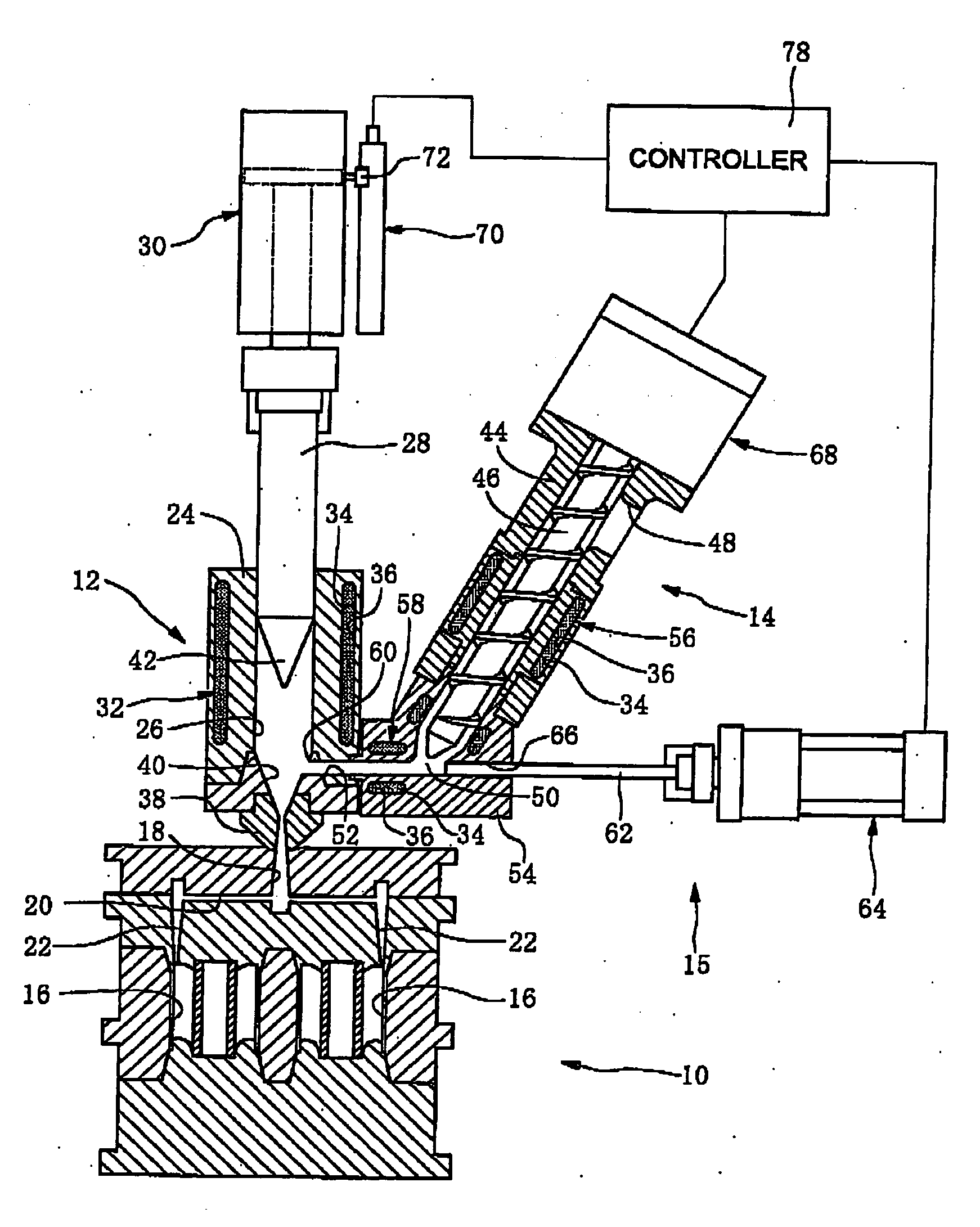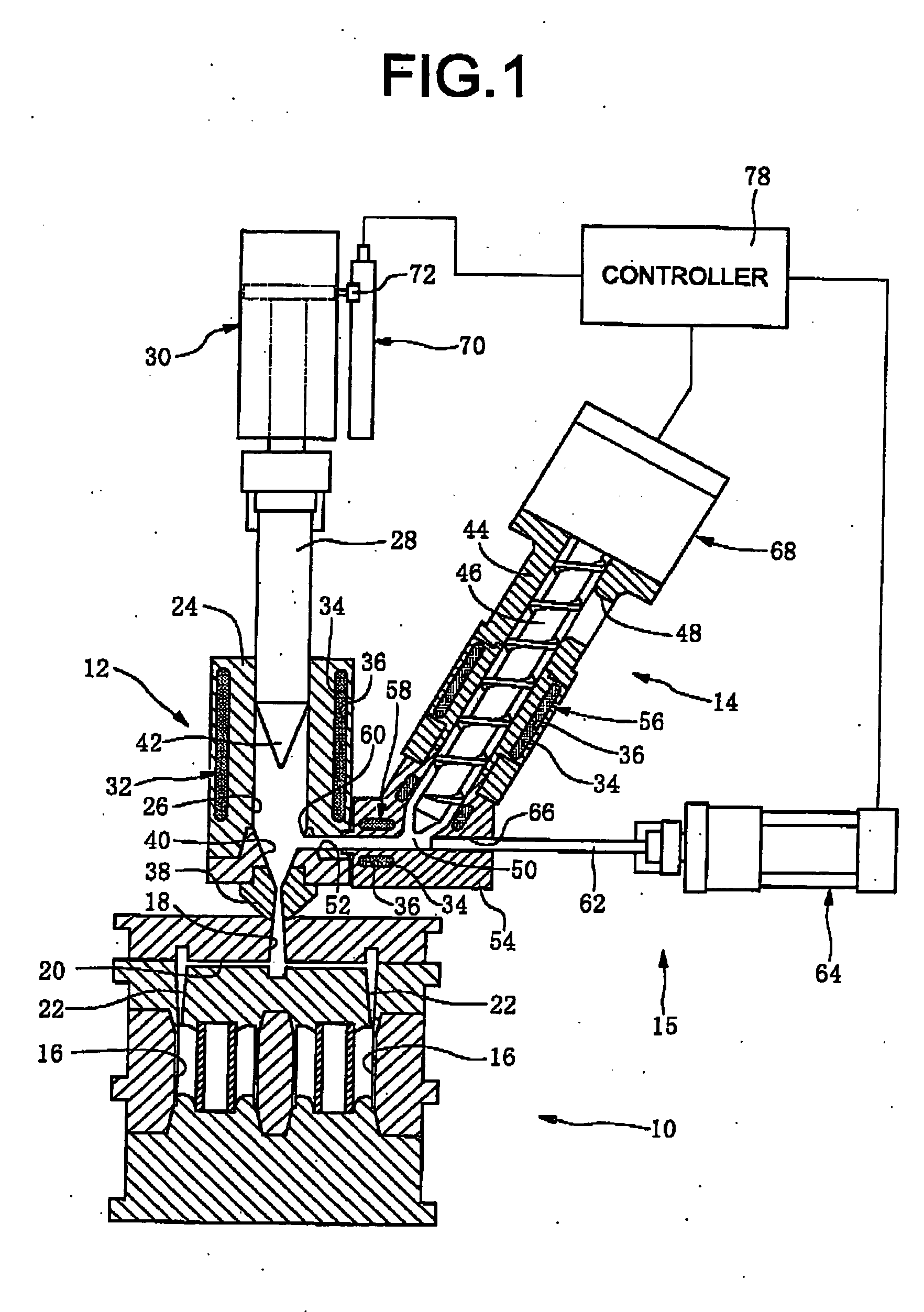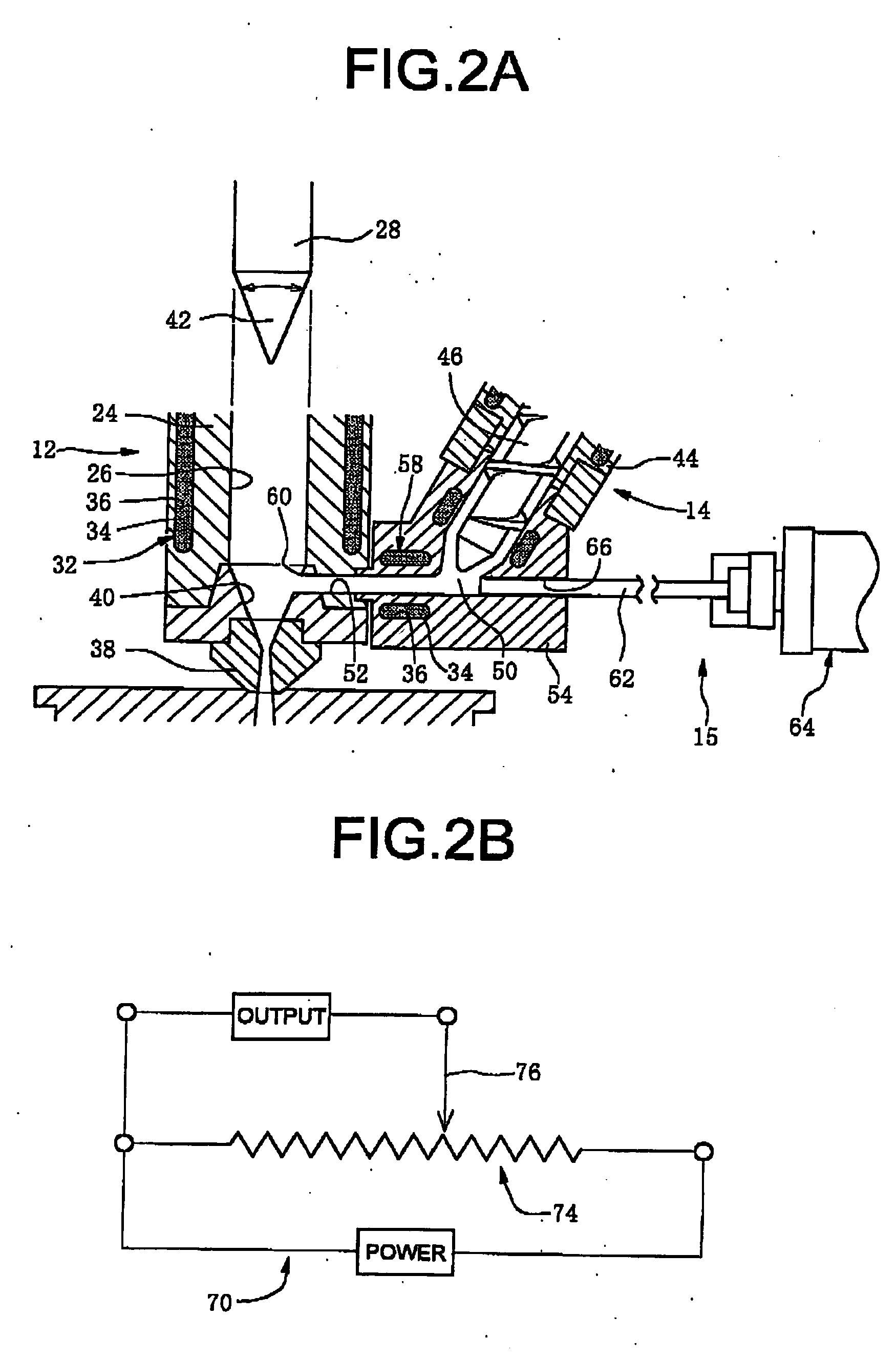Rubber injection molding device and rubber product manufacturing method
a technology of which is applied in the field of rubber injection molding device and rubber product manufacturing method, can solve the problems of less manufacturing efficiency, a large number of molds, and short vulcanization time in injection molding of rubber products using rubber injection molding device, so as to reduce the vulcanization time and eliminate various problems, the effect of reducing the occurrence of residual rubber
- Summary
- Abstract
- Description
- Claims
- Application Information
AI Technical Summary
Benefits of technology
Problems solved by technology
Method used
Image
Examples
Embodiment Construction
[0058]FIG. 1 illustrates the overall structure of a rubber injection molding device according to a form of embodiment of the present invention. As is shown in FIG. 1, the rubber injection molding device is equipped with a pushing assembly 15 in addition to a mold 10, and injecting machine 12 and a feed machine 14.
[0059] The mold 10 has a molding cavity 16 therein, and also has a sprue 18, a runner 20, and a gate 22, connected to this molding cavity 16. 24 is an injection cylinder of the injecting machine 12. The injection cylinder 24 includes an injection chamber 26. A rubber is charged into this injection chamber 26, and then is expelled from a nozzle 38 at the tip part of the injection cylinder 24 (the bottom tip, as shown in the figure) by the forward motion of an injection plunger 28, shown as motion in the downward direction in FIG. 1, and is injected into the molding cavity 16 of the mold 10.
[0060] The injection plunger 28 is driven in the forward direction, which is the dow...
PUM
| Property | Measurement | Unit |
|---|---|---|
| temperature | aaaaa | aaaaa |
| temperature | aaaaa | aaaaa |
| temperature | aaaaa | aaaaa |
Abstract
Description
Claims
Application Information
 Login to View More
Login to View More - R&D
- Intellectual Property
- Life Sciences
- Materials
- Tech Scout
- Unparalleled Data Quality
- Higher Quality Content
- 60% Fewer Hallucinations
Browse by: Latest US Patents, China's latest patents, Technical Efficacy Thesaurus, Application Domain, Technology Topic, Popular Technical Reports.
© 2025 PatSnap. All rights reserved.Legal|Privacy policy|Modern Slavery Act Transparency Statement|Sitemap|About US| Contact US: help@patsnap.com



